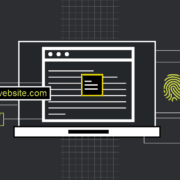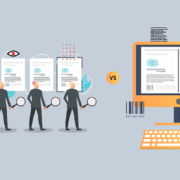What are the Benefits of Implementing a Quality Inspection System?
Date: Feb 04, 2021 | Category: Quality | Author: Kayla Caticchio
Quality Inspection Systems
How shifting from manual to automated quality control can help your business eliminate inefficiencies.
If you’ve clicked on this article, chances are you’re considering implementing a quality inspection system in your organization. Maybe your business is losing money due to delays in the quality control department, maybe you’ve had a critical error slip by unnoticed, or maybe you just want to give your team the tools they need to get the job done more efficiently.
Whatever your reason for considering a quality inspection system may be, there are several benefits that come with implementing automation and quality inspection systems across your quality workflow.
What is a Quality Inspection System?
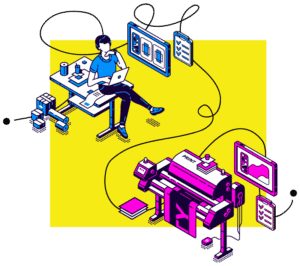 Quality inspection systems enable proofreaders to compare Master and Sample files, both digital and printed, to automatically detect any differences between the two.
Quality inspection systems enable proofreaders to compare Master and Sample files, both digital and printed, to automatically detect any differences between the two.
These side-by-side comparisons work by overlaying two files to pick up even the smallest of errors with pinpoint precision. Built for use throughout the entire quality control process, quality inspection systems can be implemented across multiple departments to compare content at every stage of the workflow.
This allows proofreaders and other quality control professionals to ensure that no errors have been created as files move from one stage to the next. Printer proofs, for example, can be compared to original PDF files to avoid conversion errors. Next, plate files can be inspected to ensure that no changes were introduced during the stepping and separation process.
Finally, proofreaders can confirm that prepress files are error-free and ready to be printed before being sent to the customer. Quality inspection systems also enable the inspection of digital files against printed components to ensure that the final packaging matches the original approved artwork.
The Challenges of Manual Proofreading
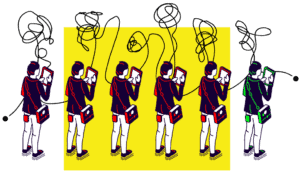 With consumers having more brand options than ever before, getting products to market faster is essential for many businesses when it comes to differentiating themselves from competitors.
With consumers having more brand options than ever before, getting products to market faster is essential for many businesses when it comes to differentiating themselves from competitors.
Leading the time-to-market race gives you the benefit of reaching consumers first and positioning your brand as a market leader before anyone else. Unfortunately, many companies still rely on manual proofreading methods that can slow down the entire quality control process, affecting the distribution and project turnaround time. These manual methods are slow, inefficient, and prone to errors that can range from a spelling mistake or missing piece of artwork, to a more dangerous error like the wrong dosage information on a pharmaceutical label.
Another challenge is the fact that standard packaging processes usually consist of manually proofing labels and packaging, which can often take hours. Repetitive tasks combined with high volumes of packaging materials can lead to proofing fatigue and therefore allow errors to slip by unnoticed. It’s not uncommon for errors to be missed when proofreaders have been reviewing the same work for hours on end. Small font sizes, distractions, and difficulty managing version changes also contribute to errors that can ultimately have detrimental effects on your company.
Quality Inspection Systems and Error-Free Packaging
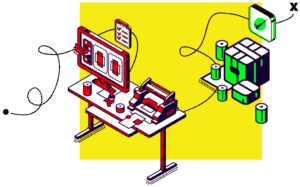 With globalization increasing the complexity of developing, distributing, and selling products, many businesses are turning towards automation to help manage their operations.
With globalization increasing the complexity of developing, distributing, and selling products, many businesses are turning towards automation to help manage their operations.
While automation has traditionally been implemented in areas such as production, marketing, and even sales, there’s one aspect of business operations that more and more companies are choosing to automate: quality control.
As businesses, particularly brand companies, tend to focus their technology on product features or consumer benefits, the productivity gains associated with automated quality control can oftentimes be overlooked. But they shouldn’t be.
Any company whose products land in the hands of consumers should consider the importance of high-quality packaging.
Quality Inspections Becoming the Gold Standard
With thousands of products and hundreds of SKUs, companies in industries such as pharmaceuticals, printing, and consumer goods have their own unique set of challenges when it comes to ensuring packaging quality. As anyone in these industries already knows, ensuring packaging accuracy is no small task, especially in an age where one small error can have serious consequences for your brand.
A misprinted label, for example, can cost a company thousands of dollars in material goods and even more in brand equity as consumers begin to lose trust in the brand. Think this could ever happen to your brand? Think again. These types of errors are even more common than one might think. Year after year, the majority of FDA product recalls are caused by labeling errors.
The risk of packaging errors factored in with increasingly complex regulations has contributed to automated quality inspections becoming the gold standard across a variety of industries. Fortunately, quality inspection systems are becoming more robust, accessible, and easier to use than ever before. In this article, we’ll be discussing how implementing these systems can benefit quality control teams, no matter the industry.
The Benefits of Quality Inspection Systems for Your Business
Faster project turnaround time
 One of the biggest reasons why companies turn to quality inspection systems is to help cut down on revision time, in turn speeding up the entire quality control process and getting products out the door faster. By centralizing inspections and allowing users to detect errors early on (ie. before they’re printed), quality inspection systems fast-track the quality control process without sacrificing quality.
One of the biggest reasons why companies turn to quality inspection systems is to help cut down on revision time, in turn speeding up the entire quality control process and getting products out the door faster. By centralizing inspections and allowing users to detect errors early on (ie. before they’re printed), quality inspection systems fast-track the quality control process without sacrificing quality.
Automatically comparing samples to customer-approved files ensure that differences like text, spelling, artwork, and barcode errors can be caught immediately. This helps prevent further inspections downstream that can be inefficient and lead to lost time. In fact, many quality departments that have implemented this kind of technology have been able to cut their proofreading time in half, oftentimes going from hours of inspection to seconds.
“Without spending wasted hours proofreading, typical jobs are brought to market 3-5 days earlier, generating increased revenue and allowing us to focus on relationships with our customers.” – Vince Nocella, CRW Graphics
Managing revision cycles is another benefit of making the switch to quality inspection systems as any errors that have occurred between stages can immediately be identified. From the copy and artwork creation stage to prepress, print, and delivery to the customer, inspection technology helps ensure that there are no delays between departments.
This creates a more collaborative proofreading process, improving communication with comprehensive inspection reports that give proofreaders the ability to share information between revision cycles. Users can leave comments and annotations on inspection reports to compare with previous versions, ensuring that the right changes have been made.
Exponential business growth
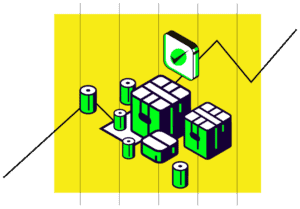 Business growth is another major benefit of implementing a quality inspection system. For certain industries such as Marketing & Creative Agencies, a common challenge is completing jobs within the amount of time allocated by the client. Eliminating delays in their proofreading process means companies no longer have to struggle with juggling man-hours and budget. This gives them the ability to take on more projects, helping them grow their business exponentially.
Business growth is another major benefit of implementing a quality inspection system. For certain industries such as Marketing & Creative Agencies, a common challenge is completing jobs within the amount of time allocated by the client. Eliminating delays in their proofreading process means companies no longer have to struggle with juggling man-hours and budget. This gives them the ability to take on more projects, helping them grow their business exponentially.
Quality inspection systems can also help set your business apart from the competition by using it to position yourself as an industry leader in quality control and automation.
Printers, for example, can use quality inspection technology to open doors for new business opportunities by showing potential customers that they’re willing to invest in systems that provide an extra layer of security. Producing the highest quality labels and packaging reduces the risk of expensive reprints, or even recalls, saving customers time, money, and potential damage to their reputation.
Verified inspection technology gives your customers the added assurance that extensive quality control checks are being carried out in your production facility, ensuring that their most important work is protected. “[Quality inspection technology] shows customers and potential customers that we’re doing everything available to ensure that jobs are done properly straight out of the gate” says Josh Jenks, Technical Sales Director at Target Label.
Cost savings
 Aside from causing serious damage to your brand’s image, letting a critical error slip by can cause significant financial implications. When an error is detected on labels or packaging, companies might have to issue a recall on the product, costing them thousands of dollars and leaving them with entire batches of unsellable inventory.
Aside from causing serious damage to your brand’s image, letting a critical error slip by can cause significant financial implications. When an error is detected on labels or packaging, companies might have to issue a recall on the product, costing them thousands of dollars and leaving them with entire batches of unsellable inventory.
“[Quality inspection systems] have saved us from a huge recall which could have bankrupted our company,” says one quality control inspector in the pharmaceutical industry. “It’s improved the overall quality on the production floor and reduced complaints and returns from our customers”. By detecting even the smallest errors before they’re printed, your quality department can be confident that everything leaving the facility is 100% accurate.
Oftentimes, it’s not a major packaging error that ends up costing money for a brand. Even something as simple as a faulty barcode can be problematic. Poor barcode printing or distortion of the barcode can affect its readability, and as every brand company knows, unreadable barcodes at the point of sale result in a loss of revenue.
Quality inspection software can verify and grade all barcodes before they’re printed, protecting your packaging from faulty barcodes without having to manually scan each one. This can help your business maximize sales revenue by ensuring that every product that hits store shelves can be properly scanned at the register.
Material management can also be a source of financial concern for any company that deals with packaging. Excess print waste for example, can cost companies time and money as any errors made during the printing process will have to be corrected with additional resources. When you consider the costs of printing, like ink, warehousing costs, postage, and labour, any reprints caused by errors can have serious financial implications.
Quality inspection systems eliminate the risk of misprints and formatting issues that result in lost time and wasted materials. Effectively managing waste prevention with automated quality control allows you to conduct business more sustainably, helping to improve both your environmental and financial impact.
Shorten approval cycles
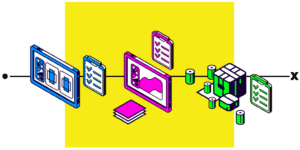 In addition to shortening time-to-market, quality inspection technology accelerates the approval process by eliminating the need to travel between production facilities for approval.
In addition to shortening time-to-market, quality inspection technology accelerates the approval process by eliminating the need to travel between production facilities for approval.
These systems store all relevant inspection information to be tracked within the platform, centralizing feedback and ensuring accountability for each inspection. Without having to manually markup each proof or document, proofreaders can assign levels and comments on revisions. This allows your quality team to be completely transparent with customers in regards to the types of differences found between the Master and Sample files.
By digitally keeping track of all inspection results through comprehensive inspection reports, all changes can be effectively communicated to key stakeholders for a quicker approval cycle. With these inspection reports, customers or other stakeholders have the assurance that appropriate quality control measures have been implemented and that the required changes have been made.
Getting started with quality inspection systems
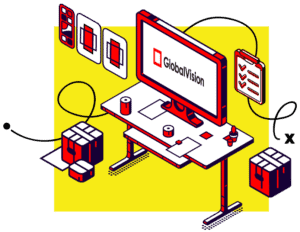 As competition between brands becomes more prominent, companies face constant pressure to protect their image and reputation while being seen as innovators or market leaders. In turn, product lines are expanding and brands are starting to introduce their products into new markets, therefore increasing production volume. This can make the quality control process more difficult to manage as it becomes increasingly complex.
As competition between brands becomes more prominent, companies face constant pressure to protect their image and reputation while being seen as innovators or market leaders. In turn, product lines are expanding and brands are starting to introduce their products into new markets, therefore increasing production volume. This can make the quality control process more difficult to manage as it becomes increasingly complex.
With workloads increasing for proofreaders and other members of quality control departments, so does the risk of errors that can make their way into the hands of consumers. Fortunately, quality inspection systems are becoming more accessible and widely implemented across a variety of industries.
While the initial cost of implementing a quality inspection system can seem high compared to sticking with the status quo of manual proofreading, the time and cost savings on labor and artwork make it worthwhile. For example, over 75% of proofreaders who use GlobalVision’s quality inspection software have been able to regain their initial investment within two years.
As label and packaging standards continue to evolve, so does the need to implement effective technology solutions like automated quality inspections. These systems not only benefit quality control teams for the reasons mentioned throughout this article, but they also help improve processes and productivity throughout your entire organization, making the switch from manual to automated quality control a worthwhile one.
To learn more about the benefits of implementing a quality inspection system, request a demo of GlobalVision here.
Related Articles:
- 4 Reasons Why Your Business Needs a Graphics Inspection Tool
- How to Avoid Waste on the Print Production Floor
- Streamlining Pharmaceutical Artwork Management
- What is Quality Management System?
- What is Quality Inspection?
- Solving The Content Efficiency Problem in the Pharma Industry
- Your Complete Guide to Meeting FDA Labeling Requirements
Related Tools:
- Compare Text Free Online Tool by GlobalVision
- Verify – A Web-Based Tool to Automate Proofreading
- Automated Quality Control
What our customers think of our proofreading tools:
“GlobalVision has resulted in at least 50% time-saved proofreading on the press versus visually inspecting the sheets. The more sheets there are, the more time savings we can observe”
– Dave Mickiewicz, Sales Manager at General Converting Inc.





